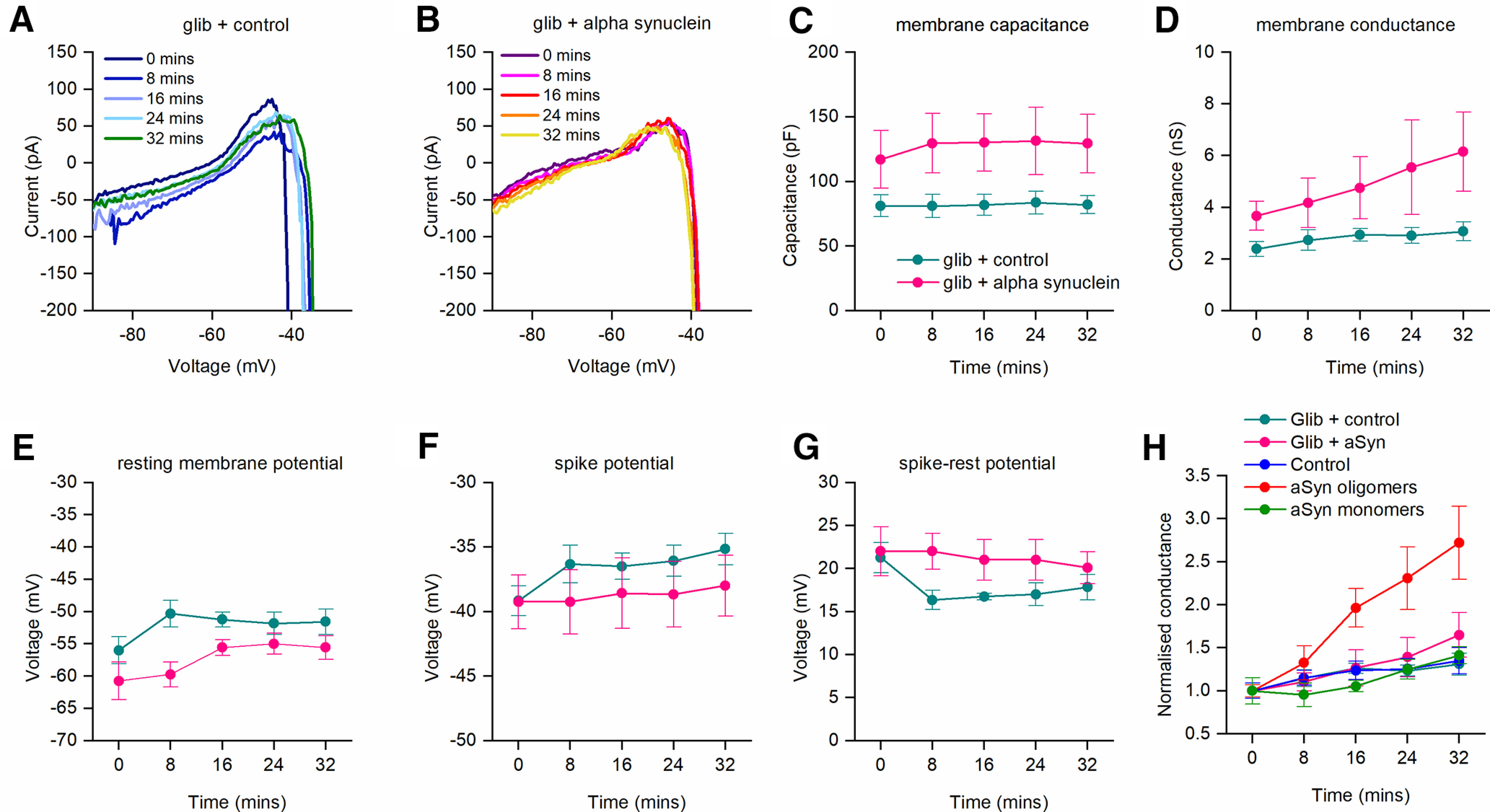Figure 7.

The KATP channel inhibitor glibenclamide blunts the effects of α-syn aggregates on the DIV. Slices were incubated in glibenclamide (1 μm) to block KATP channels. A, Example DIV curves for a neuron that had vehicle introduced. B, Example DIV curves for a neuron that had α-syn aggregates introduced. For A, B, each graph shows the DIV curves at 8-min time points throughout recordings (32 min). There are no marked changes in the DIV across time for the two experimental conditions. C–H, Extracted neuronal parameters averaged across recordings for the time periods during recordings (n = 6 for vehicle, n = 6 α-syn aggregates). Capacitance (C) showed no significant change over time for all the experimental conditions. D, There was a small increase in whole-cell conductance for neurons with α-syn aggregates, but the percentage change was closer to vehicle than to α-syn aggregates without glibenclamide. Resting potential (F) and spike threshold (G) also slightly increased with time, the potential difference from rest potential to spike threshold remained constant with time. H, Graph plotting the normalized conductance (normalized to the conductance at time 0 min) for all experimental conditions. Using a Kruskal–Wallis ANOVA, we confirmed that both time and experimental condition had a significant effect on conductance (p < 0.0001 and p < 0.0001, respectively). At 32 min, the neurons with α-syn aggregates injected have a significantly greater conductance than any of the other experimental conditions (vs control p < 0.0001, vs monomer p = 0.0003, vs glib + control p < 0.0001, vs glib + α-syn p = 0.0045; Dunn’s post hoc analysis). No other experimental conditions were significantly different from each other.
